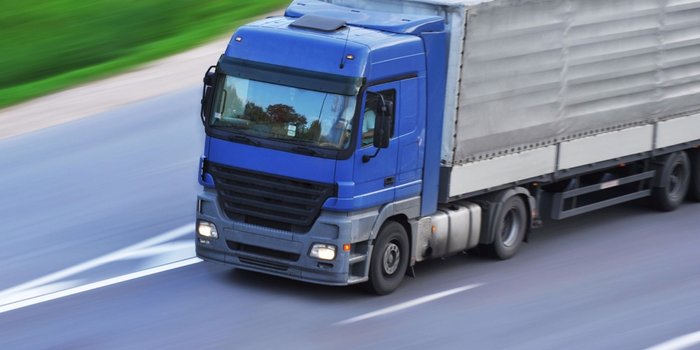Future and Growth of Transportation Market by 2020
Praveen Vashistha
Founder & Director at Gxpress Solution (India) Pvt Ltd & Courierwalaz
January 18, 2019
Opinions expressed by Entrepreneur contributors are their own.

The business world is facing a complete overturn, and so does every industry vertical. The spending on IoT (Internet of Things) in the digital age is going to increase multifold with a net worth crossing $581 billion by 2020, as per McKinsey. Transportation and logistics are the backbones of the economy and an integral part of almost every business are also going to spend over $40 billion on IoT platforms, systems, and services by 2020, as per Statista. These facts clearly signify the new opportunities that the Transportation market is expecting in near future. With Artificial Intelligence, Machine Learning, New Age tech, and newer innovations, the transportation industry is also experiencing new market players, a broader spectrum of services, new business models, and increasing customer expectations.
Although the transport and logistics industry has faced pandemonium for long in its areas of disruption need a complete tip over, yet the possible future with the development of Physical Internet, WMS (Warehouse Management Systems), increasing numbers of startups and business upscaling is bright and progressive. The ‘Agenda: 2030’ of the UN also includes transportation and logistics into the mainstream of development in many of its Sustainable Development Goals (SDGs). Walking on the same lines, most of the economies are also strengthening their transport infrastructure and aggregating tech advancements to supplement the transportation and logistics industry on a national level.
The Importance of Transportation in World Economy and Future Growth Plans
A High-Level Advisory Group on Sustainable Transport (HLAG-ST) formed by the United Nations released their report titled "Mobilizing Sustainable Transport for Development" at the first Global Sustainable Transport Conference in 2016, which also emphasized on greater investment and innovation in the transportation market. The statistics from the economic survey in India also showcased that the logistics industry alone will near USD 215 billion by 2020. On the Other hand, India's transport sector will grow at the rate of 5.9per cent through 2021 as per the financial report by the GoI (Government of India). In fact, IBEF (India Brand Equity Foundation) speculates an investment requirement of over $777 billion in infrastructure by 2022 for the nation to walk on the path of sustainable development defined by the UN, with a major part of that investment directed to transportation sector in the country. These facts are sufficient to explain the importance of the transportation sector not just in India, but across all geographies.
Apart from being an integral part of the infrastructure, the transportation sector is also closely related to the manufacturing sector and takes a major share of a nation’s GDP for investment, revenue generation, and employment creation. The transportation sector is getting more attention since the last decade, and the developmental changes both in the public and private sector are clearly visible today. Subsequently, to approach towards the SDGs, countries across the world are also encouraging PPP (Public Private Partnership) at all levels. Whether it is air, land (rail and road), water, or space mode, transportation is undergoing a technological change in all the aspects. Right from speed and time to safety and risk mitigation, the transportation sector has incorporated the best of technological advents to evolve and access the larger areas. Today, most of the investment in the transport sector is either to construct new infrastructure or to enhance the existing network. The annual study by International Transport Forum showcased that the global GDP marked the growth of 3.8per cent during the last financial year and the trade volume also grew by 3.6per cent marking a notable rise in the sector. The detailed analysis even projected better growth of container traffic, air freight, rail freight and road freight, which is going to rocket high by the year 2020.
The Scope of Development: Evolution of Transportation in India and the World
A number of distinct business models exist within the transportation sector with differentiated growth fragments come together to decide the evolution of the transportation sector as a whole. These various models are reshaping the market and the complete industry with the involvement of newer megatrends. Not just this, but the entry of new market players as ventures or startups are also giving the desired momentum to the industry to expand and flourish. India, being one of the fastest growing nations has also devoted a major portion of the GDP to transport infra development including all the industry verticals. Nevertheless, the efforts of the government cannot realize the goals unless private partnership including FDI is actively implicated. Both the B2B and B2C market segments are directly impacted by the steps taken by the economies and the private players. ITF has also speculated changes in the global transport infra, where the global freight volumes indicate an increasing dependency on Asia-led growth.
Currently, the global transportation industry is facing major obstacles to implementing technological breakthroughs and automation in the sector. The lack of training in digital tech for the workforce has become a challenge for Transportation and Logistics Companies worldwide. Although automation and innovation are gaining grounds the slow adoption pace and lack of adaptive infrastructure is also a cause that needs to be addressed in time. The future of transportation market despite all the obstacles is clearly growing because of the prioritized investments and framework implementations by the world economy. This is yet to be seen, what 2020 really brings along.


